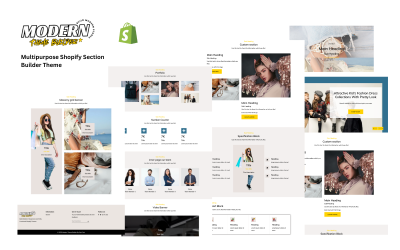 SALE
SALE  SALE
SALE 
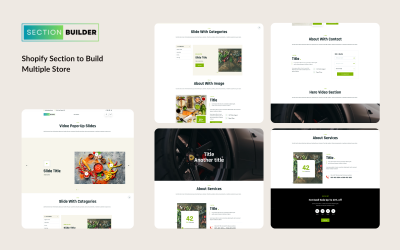 SALE
SALE 
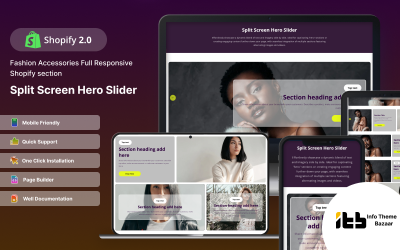
Split-hero - Slideshow Responsive Shopify 2.0 Theme by Infothemebazaar
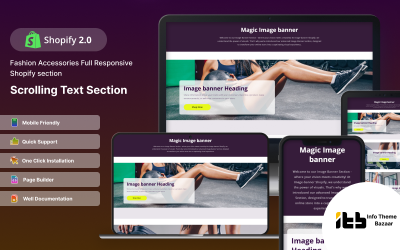 SALE
SALE Magic-image-banner Responsive Shopify Section by Infothemebazaar
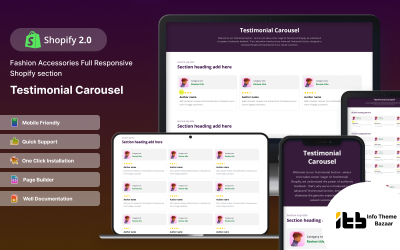 SALE
SALE Testimonial - Responsive Shopify Section by Infothemebazaar
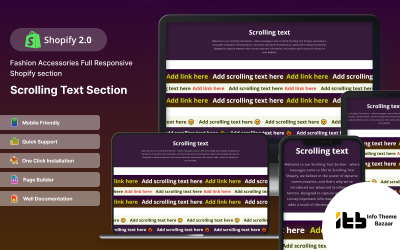 SALE
SALE Scrolling-text - Responsive Shopify Section by Infothemebazaar
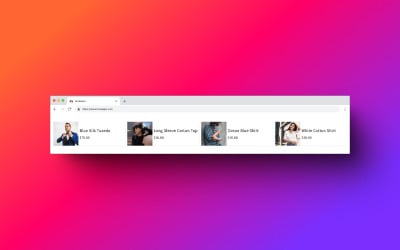
Scrolling Products - Responsive Shopify Section by HURAAPPS
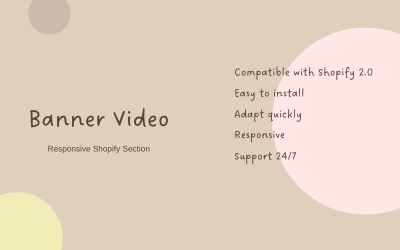
Banner Video - Responsive Shopify Section by LotusTheme

Timeline - Responsive Shopify Section by HURAAPPS


Search Form - Responsive Shopify Section by HURAAPPS

Bulk Order Form - Responsive Shopify Section by HURAAPPS

Feature Grid - Responsive Shopify Section by HURAAPPS




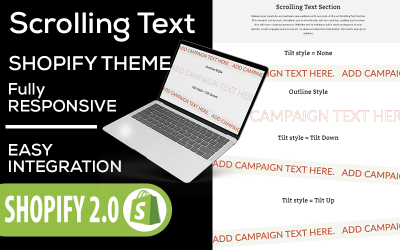
Scrolling Text - Marquee Responsive Shopify Section by LevelUP_Themes
5 Best Shopify Sections 2025
| Template Name | Downloads | Price |
|---|---|---|
| Scrolling-text - Responsive Shopify Section | 0 | $8 |
| Scrolling Text - Marquee Responsive Shopify Section | 0 | $16 |
| Testimonial - Responsive Shopify Section | 0 | $8 |
| Magic-image-banner Responsive Shopify Section | 0 | $7 |
| Split-hero - Slideshow Responsive Shopify 2.0 Theme | 0 | $17 |
Create a Strong Web Identity with Shopify Sections & Modules
Welcome to TemplateMonster, your one-stop shop for high-quality Shopify sections! It has never been so easy to add customer-focused modules to your online store. These sections are very customizable, so you can change how your e-shop looks to suit the tastes and preferences of your wide range of customers. You now have a lot of choices: impress your buyers with navigation bars, slideshows, and promotion blocks that show off your products in a new way. It's now easier than ever to create an online storefront that looks good and gets people excited. Say goodbye to doubt and hello to renewed conviction!
What are Shopify Sections?
The best way to set up your website depends on the Shopify sections that come with the theme you're using. Generally, these parts are assembled from particular functional blocks. These may include headers, text, images, or even hyperlinks. Using and combining these blocks in your templates gives you more room to play around with your store's content structure. Essentially, this means you have control over the aesthetics and tangible appeal of your online shop and bypass the hassle of code editing. Notably, the limit for Shopify section groups per template stands at 25.
Moreover, every section gives you a diverse selection of blocks that you can conveniently add to it. Surprisingly, there's room for as many as 50 blocks within a single section. Therefore, the kinds of blocks that are at your disposal depend on your selected theme. However, there may be limits on the number of blocks to be put in.
On the other hand, you do have more freedom to change the section's looks. You do this by manipulating its settings to incorporate an image, then getting to tweak its size, alignment, background color, and order in which items appear when shoppers land at your shop.
How do Shopify Sections and Modules Work?
These tools allow sellers to split their shop into different divisions, each carrying distinctive content and design details. As a result, users gain wider latitude over how they style their storefronts.
Adding Shopify sections engages a drag-and-drop method and offers store owners a friendly and straightforward route to maneuver and tailor their shop's structure. They stand for an individual piece of content, be it a hero banner, featured products, testimonials, or a form to sign up for newsletters. Store owners are free to remove, include, and modify them as needed.
Furthermore, Shopify sections open doors to even more enhanced regulation over the module components. For instance, the owner can select which products to feature, their sequence, and how many items to display per line. Brand-related text, visuals, and presentation can also be aligned to resonate with the in-house branding criteria.
Thus, add-ons offer you the freedom to customize them down to finer details, similar to how a sculptor revels in defining every curve and edge of his masterpieces.
Advantages of Shopify Modules
- User-Friendly: The best part about these tools is how simple the interface is, which makes it possible to change and customize them. Specifically, sellers like a drag-and-drop feature that gets rid of the need to know how to code or call a programmer.
- Flexibility: They give you the freedom to try out different layouts and move and change content as much as you want. It is possible to perform instant edits right away, and the changes are reflected in real time without causing problems. Thus, the platform gives you a way to create an appealing site that will connect with the people you'd like to reach.
- Consistency: Using modules lets you keep the theme consistent across different parts of the store. They let you create portion templates that can be used again and again on different pages, keeping the consistency that fits your brand's personality.
- Integration with Third-Party Solutions: Different apps work well together to make overall task workflows more efficient. This integration makes most of the work you have to do for your online business goals easier and lets you automate some or all of it.
- Tech Support Around the Clock: When you're exploring the digital world, it's natural to run into annoying tech problems like installation barriers, bugs, and other similar things. Don't worry—dedicated 6-month tech support from TemplateMonster is ready to jump in and help with purchased products, no matter what time it is. Due to this, it is very easy to keep things in good shape with reliable support.
Who and How Benefits from Sections for Shopify Sites?
Shops that sell things online can use Shopify sections and modules to make their operations easier and more accessible for more people. In eCommerce, they improve how things work.
Here are the categories of add-ons TemplateMonster offers:
Accessibility
The built-in accessibility modules simplify shopping and are more streamlined for everyone, but especially for people with disabilities. You can finetune your eCommerce journey to suit your particular needs.
- To begin, you can change the font size to make the text bigger and easier to read.
- You can also play around with the color contrast controls to get truly amazing visuals.
- There is also voice-to-text technology, which allows people who can't use a keyboard to use the platform perfectly.
- And now for the best part: a smooth screen reader tool that allows for seamless navigation and breezy checkout. With this, there's no finagling with manual typing or droning out loud texts.
Advertising
If you're dying to boost your marketing game, then you want to check out the power-packed advertising modules. Think of them as your digital marketing right-hand:
- putting ad spots across lots of platforms,
- segmenting prospects by analyzing user data,
- setting up A/B tests to maximize your clicks and impressions to make sure your strategy is bulletproof,
- plus, with real-time campaign success metrics right there on dashboards, you're given a clear picture of how things are going pretty much instantly.
But wait, there's more. With these tools, you've got a stronger handle on your budget, yielding optimized monetary efficiency and an increased Return On Investment (ROI). So, with the cutting-edge advertising solution at your beck and call, you become the master of your ad campaign. Plus, you're a few steps closer to steaming hot decision-making for your enterprise as far as marketing strategies are concerned.
Analytics
When you unpack analytics robust features, you get a deep and wide view of your online store and marketing efforts. Armed with this suite, crucial metrics like visitor numbers, sales activity, and customer behavior come into the limelight. Moreover, analytics applications give you keen insights into your webpage's impressions, views, and overall conversion rates. When you have this information, it's much easier to decide which campaigns are working and making visitors want to take your offers.
That's not all. Some analytic plugins provide a detailed view, facilitating a thorough study of particular groups or various user subsets. Consequently, you can take charge and tweak your ad strategies to target your intended audience more meticulously.
Marketing
Getting closer to digital marketing tools like upsell modules for Shopify is a golden opportunity for entrepreneurs or new businesses seeking a strong online reputation. Imagine creating catchy emails, designing visually striking graphics, or generating catchy captions for social media posts, just with a few hassle-free clicks.
In addition, they're packed with a multi-channel analytics dashboard, a technologically advanced tool for monitoring a promotional campaign's progress across an array of platforms in one go. Its ease rests on providing a clear picture by capturing the clicks driven by each promotional media strategy for a different period. These ultra-modern, potent operations might sound overwhelming, but they're ridiculously user-friendly.
SEO
Your business growth may require a big jump, which is where search engine optimization tools come in to save the day. These tools have the ability to draw in organic traffic. It is witnessed as your page climbs to higher ranks in search engine lists, directing potential customers right to your e-store. With the ability to use meta tags, alts, and titles in particular, store owners can change their content in a way that makes it stand out to search engines by giving better descriptions of their products. Another cherry on top is their image optimization feature that refines their good looks on SERP ensuring they shine in all their vivid appeal.
Webmaster tools also help find and fix any problems that might be stopping Google from crawling websites or indexing web pages. Also, quickly going through these tools provides some great ways to improve our visibility, like using long-tail keywords, which could be hidden gems in the content of our site. This will also probably considerably improve the likelihood that users will click on your links.
Site Security
One thing that sets this CMS apart in the world of online shopping is its full set of security tools that help keep your online store safe. It has all the important things, like:
- two-step verification,
- safe storage of encrypted data,
- advanced fraud protection,
- around-the-clock monitoring services.
If your customers shop at your online store, you're at ease knowing that their private information is safe against malicious actors. At the same time, they protect sensitive information, from personal to financial, including credit card numbers of customers, through layers of encryption. Plus, it gives users complete control over their security settings, letting them change and adjust controls to fit their very specific needs and situations.
Translation
For any business that caters to different corners of the globe, translation modules have proven to be an outstanding resource. Retailers are equipped with automated translations that flawlessly translate product descriptions from one language into another. This ensures that the website is fully multilingual.
Why is this so convenient? Because it gives all of your customers, no matter where they are in the world, the same shopping experience. So say goodbye to the need for complicated processes, manual labor, or any third-party engagement to manage these language transitions. It's never been easier to open stores with localized content, and these great modules let it be done. Plus, you don't have to compromise on the superior service you offer your consumers globally.
But this isn't the end of good things. These useful plugins let you quickly fix any problems with local currencies. This is a surefire way to build and nurture trust with your customers—and see a significant increase in worldwide sales.
User Interface (UI)
Installing UI modules on your digital storefront is a way to enhance user-friendliness. They come with features that are meant to help your store run better, like the ability to change the way products are shown and make the shopping process easier. Both online business owners and developers can design winning websites and offer users an unbeatable user experience.
UI elements give users the tools they need to drive sales growth and increase client trust. For example, Shopify shipping modules offer simple payment methods and fast delivery options. When business owners keep their homepages up to date and running smoothly, they will be able to save valuable time and money. It will no longer be necessary for them to always have IT support on hand. It's simplistically powerful.
Types of Shopify Section Modules
There are many sorts of Shopify sections that help create an attractive e-store. These consist of:
- Split Screen Hero: When it comes to your homepage design, this is in the top spot. It's the most substantial space you have. In short, it is like your brand's first greeting. So, if you take advantage of them wisely, this could turn into quite an asset for your business.
- Carousel & Slideshow: These are best for showing multiple images in a rotating slideshow. It is popular for showing ads, products, or brand messages.
- Header and Footer: At the top and bottom of your shop's pages, you'll find parts that invariably stay in place across the whole website. These fixed areas contain things like your brand's logo, handy-positioned navigation menus, and all-important links to inner pages as well as social channels.
- Featured Product: This one's designed to attract eyes to any particular item or collection that you'd like to showcase on the front page. It comes with all the bells and whistles: photographs of the product, the price tag, and an ever-inviting add-to-cart button.
- Image with Text: Another fun feature unites an image with a short but compelling headline, a sub-heading, and a little text. It's a good way to make Shopify sections that are both appealing to look at and rich with insights.
- Blog Posts: Cast the latest entries of your blog right on your homepage, gently luring people to dive deeper into what your shop's all about.
- Testimonials: They're certainly not to be overlooked. Testimonials add a layer of confidence when potential shoppers see firsthand the satisfaction of past customers.
- Newsletter Signup: Add a touch of convince for visitors to receive your newsletter invitations. This is a prime way to inform them about the latest happenings and special promotions in your shop.
Key Features of Modules for Shopify Stores
You have the amazing freedom to benefit from cutting-edge features at any time, such as showcasing customer reviews or scrolling through summaries of blog posts. The modules encourage people to interact with your website, whether they're regular visitors or people who want to buy from you.
More features:
- Mobile responsiveness: One great thing about using modules is that they work on a variety of devices. They make certain the layout suits various devices ranging from laptops and iPads to smartphones and beyond. Given the widespread rise in shopping across online platforms, this is a great opportunity to adapt to the modern mobile-centric retail trend.
- Simplicity: Make customization a breeze with the super user-friendly content editor. Adding some flair to your sales copy couldn't be easier, all thanks to adjusting modifiable text blocks through a few quick clicks.
- Drag & drop: The drag-and-drop feature shows that creating visually attractive websites is anything but daunting. No need to spend time with programming terms—have fun effortlessly putting together an attractive website.
- Product filtering capabilities: Let customers embark on an effortless journey to find what they want! Your valued customers will easily be able to find the product they want by dividing and categorizing based on multiple criteria.
- Favorable for search engine optimization: Prepare for a rise in the number of organic visitors to your site after a Google search or other popular search engine search.
Simply put, these powerful features significantly improve both the look and performance of your website. Harness these tools; they are worth more than their weight in gold.
How to Add a Section in Shopify
To add a section to a Shopify page, follow these steps:
- Go to your administrative panel > Online Store > Themes > Customize.
- The left sidebar of the theme editor has all the key elements you need to change/shape the content and design tools. Scroll to the bottom, and you'll notice “Add Section.”
- You'll see a bunch of elements that are ready to be placed on the page. Just grab the ones you need (Contact form, Email signup, Collage, etc.).
- The next step is tweaking the content and design so they blend with your eStore.
- Hit the "Save" button.
In the same way, you can add a section to a product page Shopify.
To add a custom HTML section in Shopify, go to Customize, then click Sections > Add Section, and choose Custom HTML.
Best Practices for Shopify Custom Sections
Shopify sections are excellent for personalizing themes and can lead to fantastic results when used correctly. They work in various ways, depending on the situation. This is true whether you're starting from scratch or adding a few tweaks to an existing theme based on a client's request. Putting the right Shopify sections in the right place has a big effect on conversion since customers today expect a smooth, friendly, and easy-to-navigate experience.
Below are usage rules to help you fine-tune a virtual store.
- Start by determining the kind of content you want to plug into each webpage of your website. Will it be images, videos, text, or a mix? Ensuring that customers get the info they need without having to work hard is the ultimate aim.
- Experiment with various design types. This could be the golden ticket to keeping the curiosity levels up for anyone stopping by your website for a look-see.
- Aim for show-stopping visuals. This is the playground where you are free to mix colors, match fonts, and add graphic elements. The more cohesively everything ties together to proudly display your offerings, the better.
- Client demands evolve by the second, so pay attention to feedback, adjust accordingly, and check pages to remain fresh and updated. This will ensure your credibility and interaction stats only go up.
Tutorial on Setting Up a Shopify Site
Shopify Sections & Modules: Frequently Asked Questions
What kinds of Shopify sections are available?
TemplateMonster has top-tier, configurable add-ons for your ease. You have the freedom to create collages, streamline collapsible content, set up contact forms or e-mail subscriptions, display your featured products, and much more.
How do I use Shopify modules?
Do not fret! It's as easy as a breeze with a theme's drag-and-drop facility. You could easily add cool things like social media icons, sliders, or product listings. All of them are craftily distributed and smartly placed in any space on your webpage.
How do Shopify sections assist me in building better websites?
These handy assets let users explore complex processes, exercising their creative skills without a lick of technical knowledge. Thanks to plug-and-play components like forms, grids, and the like, any amateur designer can efficiently build an attractive site quicker than ever.
